 Go Back
Go BackShare
How to Design Effective Home-Learning Programs: Takeaways from 7 Indian States
By Ronak Pol
Oct 27, 2021
The pandemic-induced school closures disrupted teaching-learning for 250 million school-going children in India. Consequently, the entire education system started developing home-based learning programs that met India's contextual needs. Teachers and students were quick to adapt to educational technology (EdTech) enabled models, and were exposed to innovative educational methodologies. Given the digital divide, a number of offline solutions were also implemented.
The pandemic-induced school closures disrupted teaching-learning for 250 million school-going children in India. Consequently, the entire education system started developing home-based learning programs that met India’s contextual needs. Teachers and students were quick to adapt to educational technology (EdTech) enabled models, and were exposed to innovative educational methodologies. Given the digital divide, a number of offline solutions were also implemented.
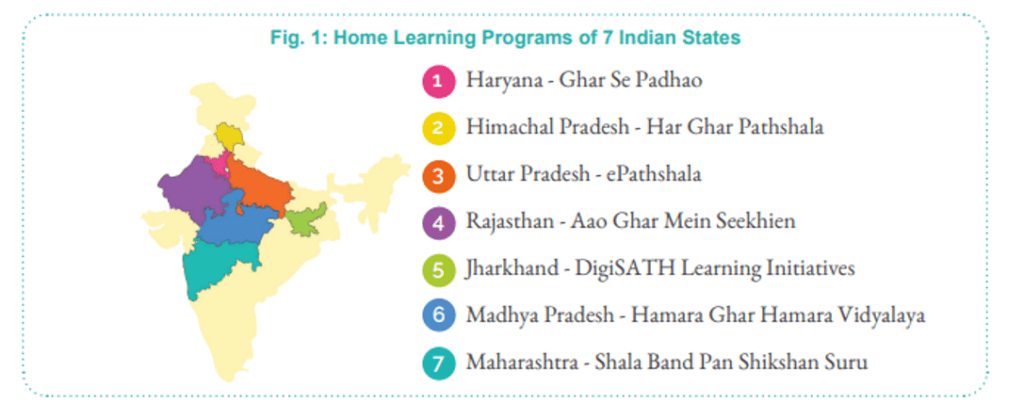
Recently, Central Square Foundation along with the Boston Consulting Group, Leadership for Equity, and Samagra launched the “Home Learning Playbook” in which we examined home-learning initiatives of seven Indian states and identified key learnings from them. The playbook proposes a five step framework which can be used to successfully implement home-learning programs across India (refer to figure 2).
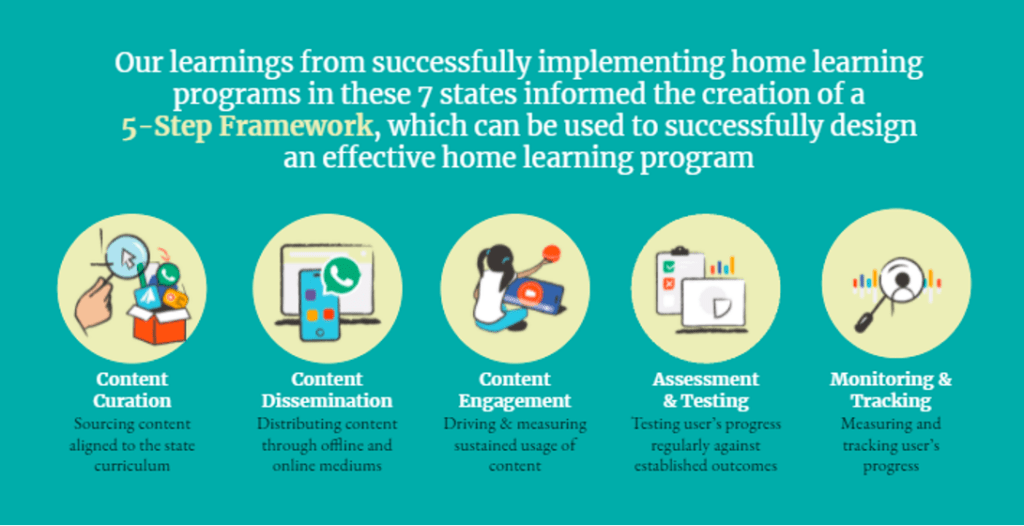
1. Content Curation
The first phase of any home-learning program is to curate content mapped to concepts or competencies as per state specified syllabus and learning outcomes. Several free e-learning platforms provided by the MoE and content partners like TicTacLearn, Avanti, Pratham, etc., provided grade-specific high-quality content. TicTacLearn provides content in six Indian languages which resulted in greater uptake by teachers and students.
At times, open-source content may either not be available or even fail to cater to the needs of all students and teachers. To solve some of these availability and contextualization challenges, state officials and teachers began creating their own content. While this gave rise to more relevant content, the accompanying resource and time commitment had to be further planned.
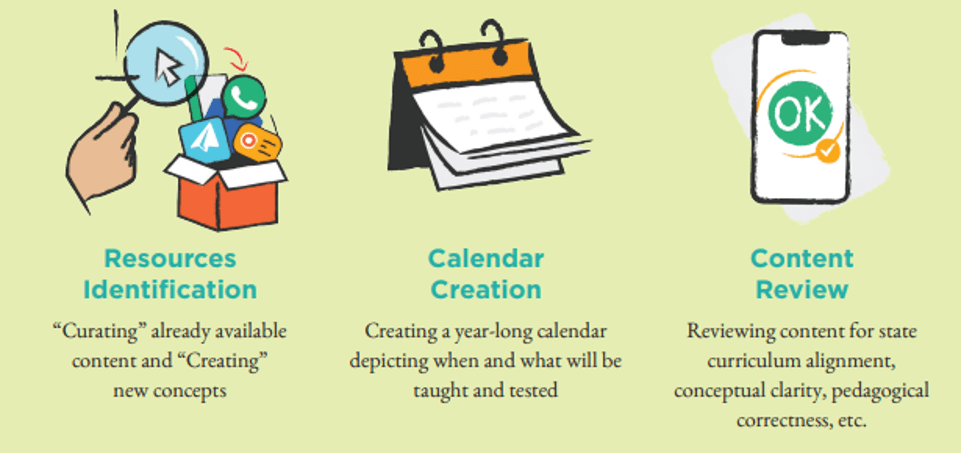
For Example, In Uttar Pradesh, the state mapped digital content provided by Rocket Learning to learning outcomes given in Aadharshila Kriyanvayan Sandarshika, an implementation plan that outlines how children will achieve competencies laid out in Mission Prerna (the state-wide Foundational Literacy and Numeracy mission launched by Uttar Pradesh). This not only ensured that students achieved the basic learning objectives, but also gave a sense of syllabus completion. Jharkhand adopted a decentralized process wherein teachers created contextual content for their students. Additional videos were also created by the education department to guide teachers on how to teach particular competencies.
Best Practices for Content Curation
a) Content should be approved by teachers
b) Animated and vibrant videos for grades 1-8; emphasis on problem-solving in higher grades
c) Videos should communicate concepts efficiently such that no external intervention is required
d) Videos should be developed for students; should be relatable content for students; and preferably in home language
Way Forward
a) Creating and curating content mapped to competencies
b) Sharing structured and curriculum aligned content to empower children to take charge of their learning trajectory and enable teachers to devote time to identifying learning gaps
2. Content Dissemination
Few households in India have access to internet enabled devices that can access e-learning resources. Coupled with a general gap in technology access, this often leads to a gap in user uptake and engagement. The technological divide is even more prominent if we consider the number of devices, children per household, and the affordability, quality and reliability of internet service in households with multiple learners in different grades. Lack of digital literacy among parents and students is a further challenge, especially for younger children who completely depend on their parents for accessing digital resources. To solve for this, any home learning program needs to deploy solutions with a combination of high-tech, low-tech and no-tech interventions (refer to figure 7).

Key Learnings
a) Survey students’ accessibility and preference for different media
b) Target multiple media for maximum reach
c) Appoint mentor to assist teachers, parents, and students with digital learning challenges
d) Create cascaded channels for communicating information
Way forward
a) Create a range of high-tech, low-tech, and no-tech solutions: take cognizance of the level of penetration of technology and address infrastructural incapacities to create high-tech, low-tech, and no-tech solutions
b) Focus on content engagement: while content dissemination is important, ensuring student engagement is paramount. Measuring content engagement will create a feedback loop and help improve content creation and curation
3. Content Engagement
Sustained usage by students is important if we want to move towards improved learning outcomes. Hence, in addition to curation and dissemination, it is also critical to focus on engagement. It is observed that many remote learning programs do not always pay enough attention to instructional pace; pathways for student practice; and checks for understanding and feedback loops to support home learning. However, such learnings are now leading to effective programs that couple practice with timely and meaningful feedback.
For example, In Haryana, an incentive system was developed using data from the Avsar app. Top performers in the weekly quiz, Higher Order Thinking Skills (HOTS), questions and daily surveys were recognized with personalized e-certificates at a block level each month. Similarly, high performers were recognized at the district and state levels each month and awarded prizes by the District Education Officer and the Director of Secondary Education, respectively.
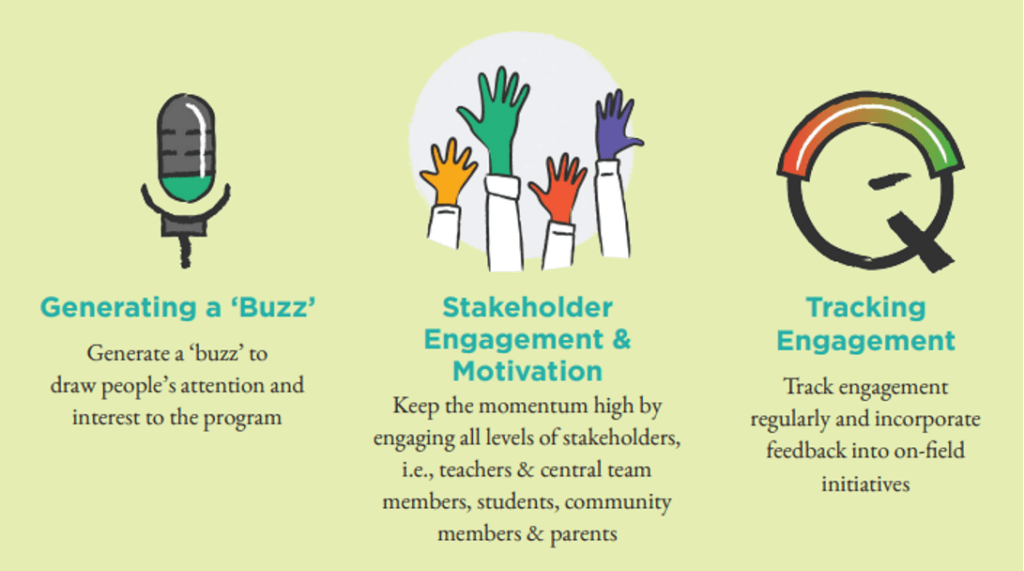
Key Learnings
a) Involve senior authorities to develop interest and faith in the program
b) Incentivize stakeholders with certificates, awards and recognition in public / on social media platforms, etc.
c) Regularly nudge administrative stakeholders
Way forward
a) Build necessary salience: administrative and political salience is key to drive program engagement among students, parents, and the community at large
b) Focus on parental engagement in student learning: all home-learning programs should have dedicated interventions to improve parent engagement in their child’s learning journey
4. Assessment and Testing
The primary purpose of any assessment is to optimize student learning in a way that helps recognize and foster the unique capabilities of each student. The role of assessment becomes even more critical in a home-learning environment where the teacher is unable to gauge student understanding through the soft cues provided by the student. Appropriately designed assessments can help identify gaps in student learning and inform provision of appropriate technical assistance and training through learning enhancement programs.
States onboarded some content partners like Avanti and ConveGenius, who had a repository of structured, curriculum mapped quizzes. While conducting assessments to understand student progression is important, using assessment data to provide informed feedback and remediation support is critical. Himachal Pradesh and Madhya Pradesh incorporated a remedial mechanism in their assessments with help from Convegenius. After completing their quiz on the WhatsApp chatbot, students were given their score, followed by an answer key. In case a student scored less than 70%, the bot shared the links to remedial content.
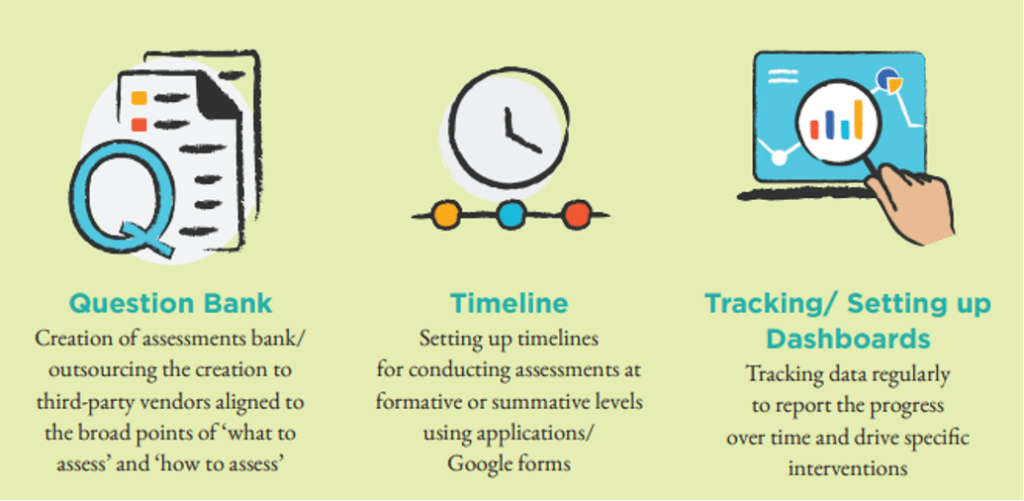
Key Learnings
a) Leverage widely used platforms like WhatsApp and formats like Google forms
b) Set aside some classroom time for pre-test revision and post-test follow up
c) Regularly provide students with performance reports and improvement plans
Way Forward
a) Define learning outcomes for accurate assessment: pre-defined learning outcomes can inform what to assess and how to assess
b) Make assessment low-stake: if assessments are not used for promoting students, incentive to cheat and misreport will reduce
c) Strengthen data collection: reliable data from assessment can influence policy with improved learning outcomes at the centre
5. Tracking and Monitoring
Major roadblock that all surveyed states faced lay in collecting reliable data – for instance, not much data is available for TV viewership and radio shows. Due to this, we often have to rely on data reported by teachers or parents through surveys, Google forms, etc. Moreover, the website analytics don’t differentiate between different users like teachers or students and using third-party or open source videos don’t allow for the tracking of viewership data.
To solve some of these challenges and to better track student data, Haryana launched Avsar, a mobile app created by Esperanza. It hosted all academic content, surveys, quizzes and assessments. The app also tracked viewership of home learning content being telecast on television.
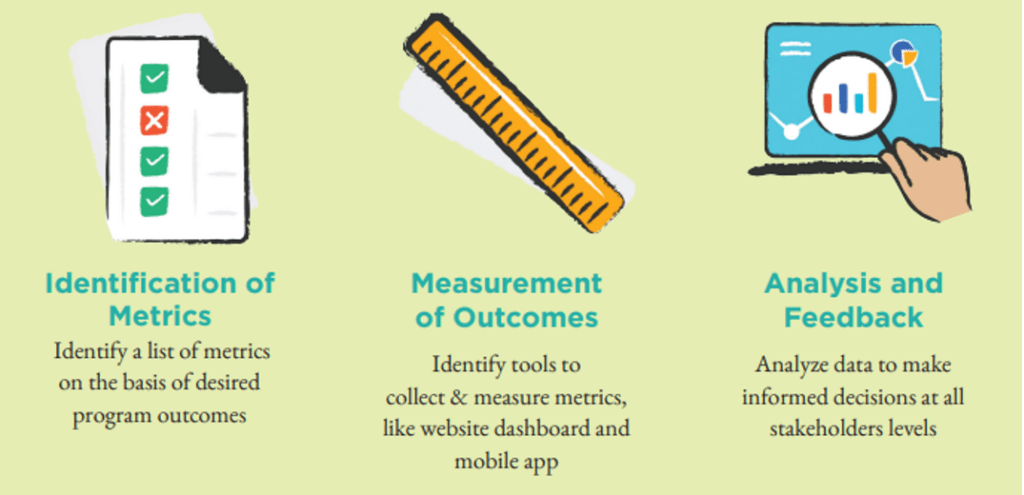
Key Learnings
a) Train teachers to interpret data and make informed choices
b) Incorporate feedback from data analysis into classrooms and teaching-learning practices
Way Forward
Tracking and monitoring data can provide useful insights for remedial teaching and influence the quality of learning. However, adequate training and professional support needs to be provided to teachers on how to interpret and use assessment data.
Conclusion
When schools reopen, it will be important to understand student learning levels and identify the level of learning loss. Home-learning programs, along with in-person instruction, can help in learning recovery. Teachers can also use already developed content to create personalized learning modules to help children bridge the learning gap.
While home learning solutions will never be able to substitute classroom learning experiences, they can be used as complementary learning resources to strengthen student learning. Moving forward, learnings from this report will help all states design and implement such home learning programs as we enter a new era of adaptive education.
Keywords
Authored by
Ronak Pol
Project Lead, CSF
Share this on
